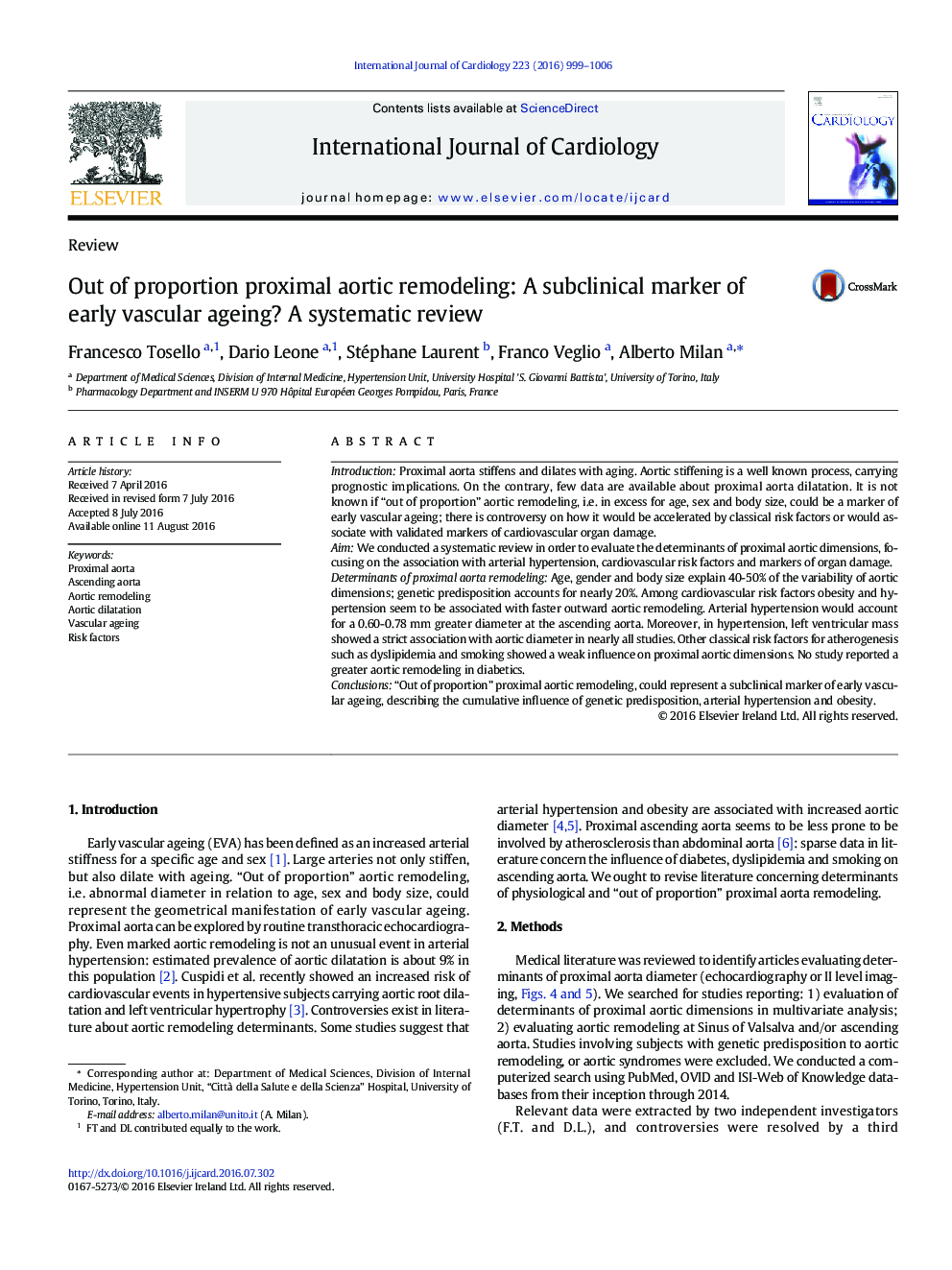| Article ID | Journal | Published Year | Pages | File Type |
|---|---|---|---|---|
| 5963075 | International Journal of Cardiology | 2016 | 8 Pages |
â¢Out of proportion aortic remodeling is abnormal for age, sex and body size.â¢Out of proportion aortic remodeling is related to hypertension and obesity.â¢Out of proportion aortic remodeling is a marker of vascular ageing.
IntroductionProximal aorta stiffens and dilates with aging. Aortic stiffening is a well known process, carrying prognostic implications. On the contrary, few data are available about proximal aorta dilatation. It is not known if “out of proportion” aortic remodeling, i.e. in excess for age, sex and body size, could be a marker of early vascular ageing; there is controversy on how it would be accelerated by classical risk factors or would associate with validated markers of cardiovascular organ damage.AimWe conducted a systematic review in order to evaluate the determinants of proximal aortic dimensions, focusing on the association with arterial hypertension, cardiovascular risk factors and markers of organ damage.Determinants of proximal aorta remodelingAge, gender and body size explain 40-50% of the variability of aortic dimensions; genetic predisposition accounts for nearly 20%. Among cardiovascular risk factors obesity and hypertension seem to be associated with faster outward aortic remodeling. Arterial hypertension would account for a 0.60-0.78 mm greater diameter at the ascending aorta. Moreover, in hypertension, left ventricular mass showed a strict association with aortic diameter in nearly all studies. Other classical risk factors for atherogenesis such as dyslipidemia and smoking showed a weak influence on proximal aortic dimensions. No study reported a greater aortic remodeling in diabetics.Conclusions“Out of proportion” proximal aortic remodeling, could represent a subclinical marker of early vascular ageing, describing the cumulative influence of genetic predisposition, arterial hypertension and obesity.
